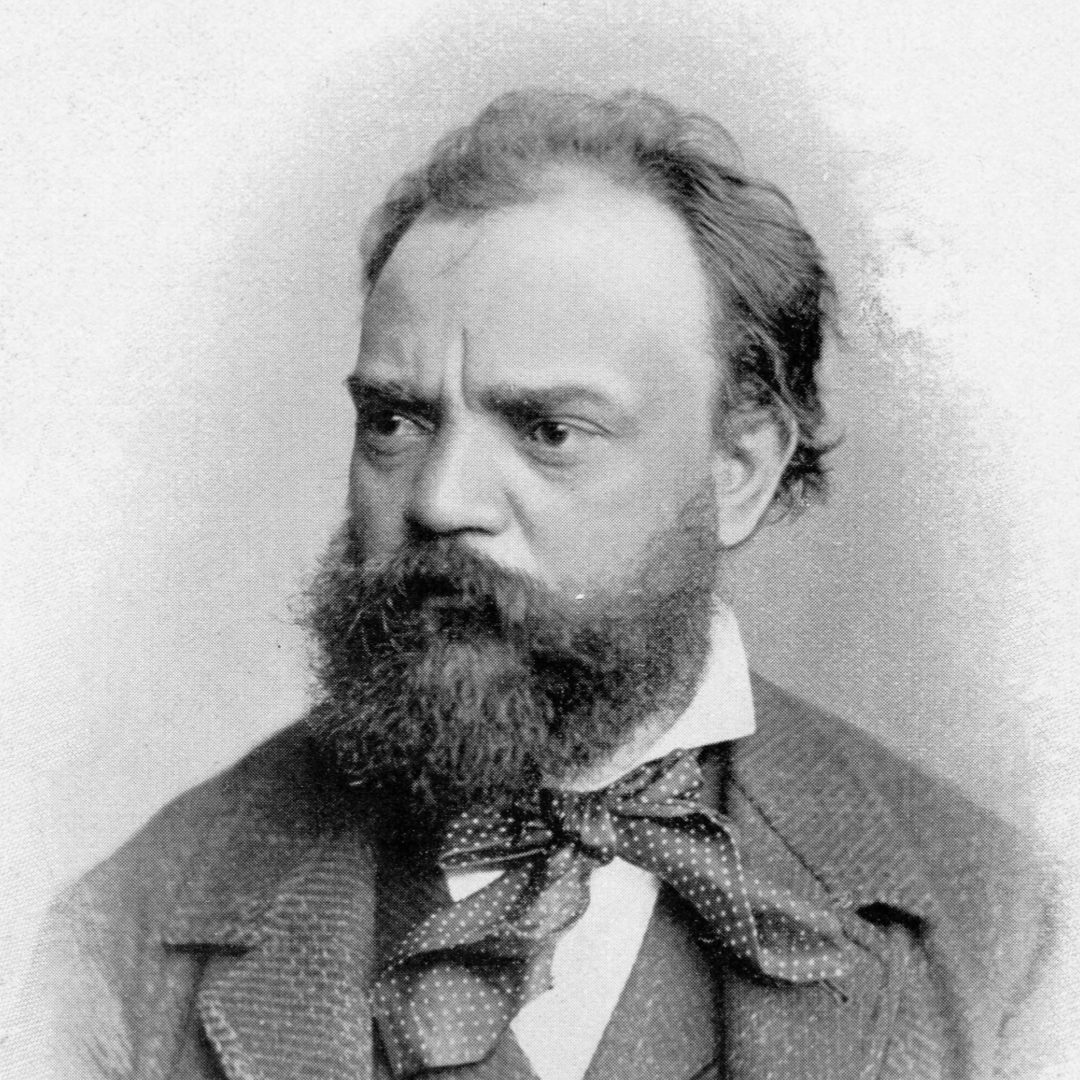Dvořák: Cello Concerto in B minor
Lakeview Orchestra will perform Dvořák’s Cello Concerto in B minor on February 11th, 2020 at the Athenaeum Theatre.
Antonín Dvořák (1841 – 1904)
Cello Concerto in B minor, Op. 104, B. 191
On March 9, 1894, during his three-year stint as Director of the National Conservatory in New York City, Antonín Dvořák left his Manhattan townhouse at 327 East 17th Street and headed across the East River to Brooklyn, where he attended the premiere of Victor Herbert’s (1859 – 1924) Cello Concerto No. 2. Herbert, who at the time was principal cellist of the Metropolitan Opera, played the solo cello part accompanied by the New York Philharmonic under the baton of Anton Seidl (1850 – 1898). Indeed, this is the same Victor Herbert who would later go on to compose popular Broadway operettas and stage music such as Naughty Marietta, The Princess Pat, and Babes in Toyland. Until that evening in Brooklyn, Dvořák had never seriously considered composing a concerto for cello. According to Dvořák’s student, Joseph Michl, “Dvořák considered the cello to be a beautiful instrument, but only in orchestral and chamber music. He admired the fine middle register, but complained about the nasal quality of the high notes and the mumbling of the bass.” Well, that’s not how Dvořák felt after hearing Herbert’s cello concerto. In fact, in 1922, Herbert recounted the events following the premiere: “Doctor Dvořák came backstage and threw his arms around me saying before many members of the orchestra, ‘Splendid! Entirely splendid!’” It was after this performance that Dvořák resolved to write a concerto for cello.
There’s an old saying that, “an artist does not paint a tree because he sees a tree. He paints a tree because he sees another artist’s painting of a tree.” Stated bluntly by Igor Stravinsky, “A good composer does not imitate; he steals.” Having heard Herbert’s cello concerto, Dvořák went into full larceny mode. While Dvořák claimed to never like the high register of the cello, Herbert’s concerto changed his mind, and he went on to use the high notes quite effectively. In just three months Dvořák completed his cello concerto, which also was the last work completed during his American residency. The cello concerto, more than any of his other concerti, is a symphonic work in terms of its grandness of sound and dramatic conception.
Like his mentor, Johannes Brahms (1833 – 1897), Dvořák was something of a compositional synthesis: a 19th century composer who used all the expressive, melodic, and harmonic resources of romanticism, he nevertheless structured his works using the musical forms of 18th century classicism. The first movement of the work, which we will hear tonight, is structured in double exposition form. Double exposition form is a classical era construct, perfected by Mozart, that features two separately composed expositions – one for the orchestra and one for the soloist. A concerto with a single exposition simply has the solo instrument repeat verbatim the opening melody played by the orchestra. This is not what Dvořák had in mind. Aside from aesthetics, Dvořák wanted a personal and expressive force coupled with lyrical passion – as embodied by the cello – to contrast the dirge-like solemnity of the orchestral content.
The orchestral exposition of the concerto, written in the key of B minor, is dark and somber. Take it as a metaphor for whatever you like: implacable fate, the merciless march of time, an otiose United States Senate, your choice. However, when the cello makes its appearance in the solo exposition, it shows itself unwilling to wallow in the dark minor key. Representing the voice of the individual striving against fate, the cello will aspire to and ultimately attain a state of grace, as represented by the brilliant key of B major – but not until after a fight. This heroic struggle of the major/minor opening theme is distinctly Slavic in tone and powerful in spirit.
It’s during the development section that the solo cello comes to grips with the tragic elements of the opening theme, and in doing so, comes face to face with mortality itself. This is one of the most moving passages composed by Dvořák, or indeed, by anyone. Marked molto sostenuto (very sustained), the cello sings a quiet, somber, and profoundly contemplative version of the opening theme accompanied by hushed string tremolos. A delicate, birdsong-inspired countermelody in the solo flute flutters high above, representing the voice of the nightingale, which according to legend is the last earthly sound heard before the moment of death. This stunning dramatic climax is achieved not by a crash and a bang, but by lyric intensity. Having contemplated and contextualized the struggle of darkness versus light inherent in the opening theme during the course of this passage, the cello frees the movement from the fateful and deathly bonds represented by the minor key.
The opening theme’s recapitulation is transformed as a triumphant and radiant proclamation set in B major. This finale to the opening movement of the concerto is shared equally by the orchestra and the solo cello directly leading to one last blaring, joyful, march-like victory. Encapsulating the large-scale story of the struggle between darkness and light, the movement ends in celebration, and we arrive in a place that is polar opposite of where we began: full of life, light, and joy.
Program Notes by Luke Smith.
Lakeview Orchestra will perform Dvořák’s Cello Concerto in B minor on February 11th, 2020. The Stage Is Set >>>

